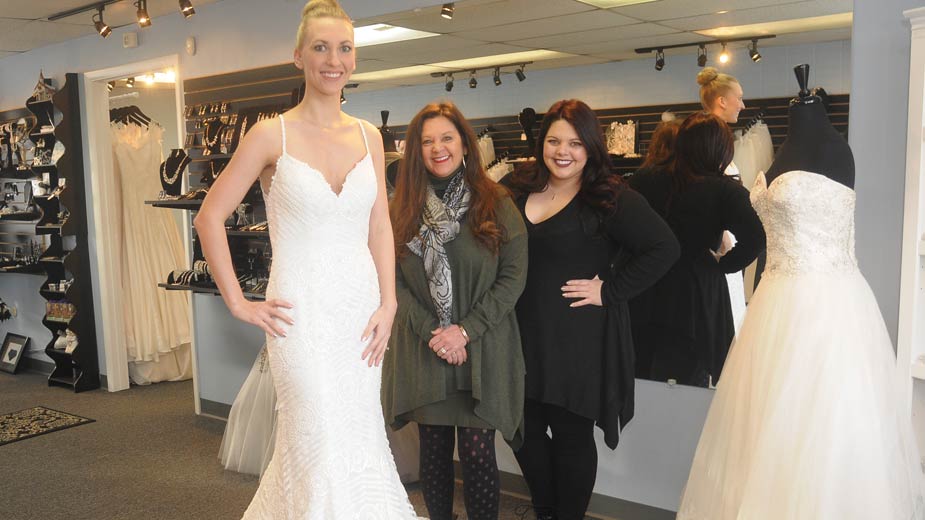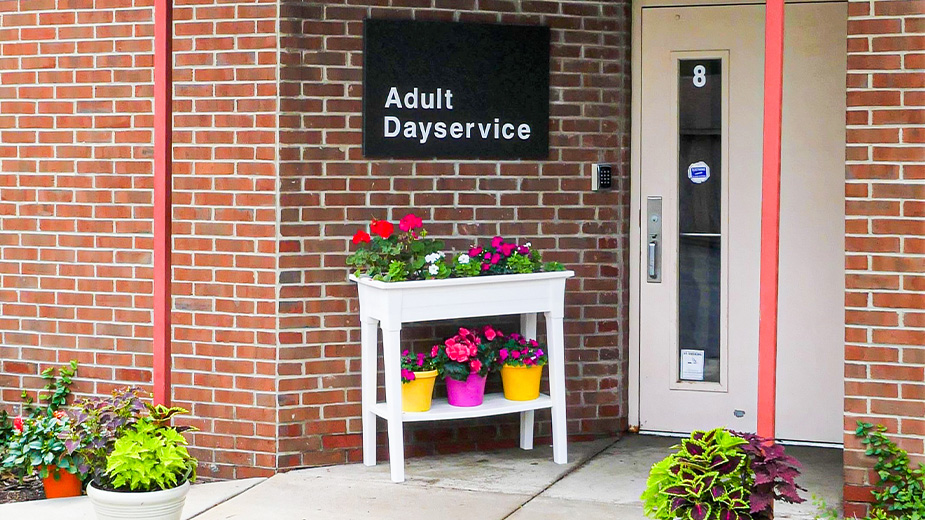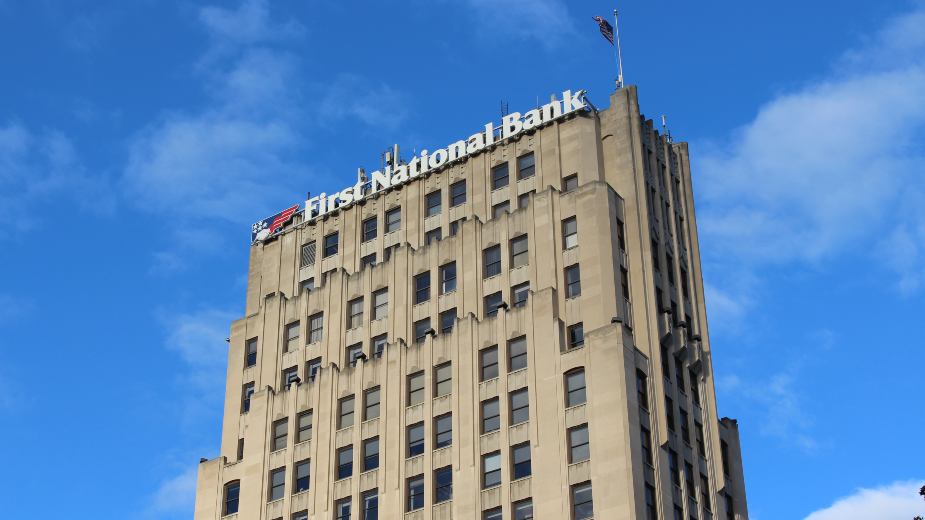When Brides-to-Be Call, They Gladly Say ‘We Do!’
YOUNGSTOWN, Ohio — It’s not your grandmother’s wedding.
Weddings have changed dramatically since the bygone days of a simple rented hall, your basic punch bowl and a short reception. And they’re still in flux.
“Get Married,” “Bridezillas,” “Four Weddings” and other reality shows have taken the hidden world of individual weddings and made them very public. A dizzying array of wedding magazines — from Martha Stewart Weddings to Bridal Guide — are helping to drive trends in glamour and broaden the horizons of prospective brides and grooms.
Today, couples take everything from planning their wedding, catering, music and the cost of a limousine into account when they prepare for their big day.
For businesses in the region, the ability to respond to ever-changing customer wants and needs as they navigate the latest trends and technologies is a must.
“Brides are now more focused on making sure their guests are entertained,” begins Alison Quinn Cox, event consultant at Joe Mineo Creative of Canfield. “So whether that’s a photo booth, a great band that you can dance to or customizable favors, there’s so much detail that goes into the planning process today.”
Joe Mineo Creative, a division of Something New, is a full-event design studio capable of handling all wedding and reception logistics, from coordinating with waiters to booking photographers. “We’ve gone as far as handling guests lists and having RSVPs come directly to our company,” Cox says.
Planners handle weddings and events that have budgets of $5,000 or more, with some clients spending upward of $80,000, she says.
While June is often thought of as the perfect wedding month, it’s become “clichéd” in the eyes of some of Cox’s clients.
“As the years go by, brides are falling in love with a fall wedding,” she says. “September and October are now just as busy as our spring months.”
A little more than half of Something New’s revenue comes from wedding work, according to Cox.
“We get phone calls from as close as three months out to as far away as two to three years,” she says. “Our recommendation is to contact us about a year out, because then we will start planning and meeting around anywhere from 10 months to a year.”
One of the challenges couples confront is the growing number of wedding photographers who bill themselves as “professionals,” but not everyone who carries a digital SLR can claim that title, says Terri Roncone, owner of Roncone Studio, Inc., Boardman.
The increasing affordability and prevalence of high-resolution digital cameras has allowed more photographers to enter the wedding market, even if their knowledge of social media and marketing greatly surpasses their skills as photographers.
“With the digital age, there are lots of people getting into the business who call themselves professionals, but who aren’t really qualified to say that,” Roncone declares. “They are advertising themselves as professionals. Their prices are so low, or they’re low enough, that for some people that’s good enough. It’s kind of devalued our industry.”
Since the early 1970s, Roncone Studio has provided wedding and commercial photographic services. The company, a second-generation family business, continues to photograph weddings, but accounts for some 20% of its income, less than it once did.
“We’re doing much more commercial work, so we’ve expanded into more avenues that way,” Roncone says.
The studio keeps its wedding prices competitive, Roncone says, giving clients a price appropriate for the services. Roncone employs a professional photojournalist as a second photographer for wedding shoots.
Packages start at $3,200, which includes two photographers throughout the day, high-resolution digital files and a set of boxed proofs. The most expensive package is $8,000.
“People tend to book about eight to 12 months ahead,” Roncone says.
She finds that warmer months are still more popular for weddings, but winter has its advocates. “We have three weddings booked in December, which is higher than normal,” he relates. “Some people want a winter wedding.”
For winter weddings, alternative locations are needed for photographs taken between the wedding and reception.
“We’ve used the [Mahoning County] courthouse in Youngstown, which is very beautiful. Stambaugh and Powers [auditoriums] are also very popular for photographs,” she says.
Limousines are standard today for the bride and groom to ride in style. But for wedding planners and couples who want an out-of-the-ordinary limousine service, Chris Steed of Carriage Limousine Service of Wellsville has just the thing. Steed’s horse-drawn carriages are “unexpected and straight from a storybook,” the company website says.
“Typically, for an indoor wedding, everything we do is afterward. We can go for a ride around the block when the bride and groom first come out. They can have pictures taken in the carriage,” Steed says, “and in some cases we can take them to the reception.”
For outdoor ceremonies, Steed can accommodate a grand entrance for the bride when she arrives at the site of the ceremony.
Several carriage models are available for rent, including the Victorian, Stretch Victorian and the Cinderella, which resembles the carriage from the Disney movie of the same name. The largest holds 10 to 12 people. The company will also try to coordinate carriage decorations that match the predominant color schemes of the clients’ wedding.
“Each event, in some cases, can have a different price because of different locations,” Steed explains. “All packages include the same basic things, like mileage, time, et cetera, but the thing that changes the price is the carriage type. In our hometown [Wellsville], we start out at around $500 and go up – depending on the distance you are from us.”
A trailer takes the horse and carriage to the wedding site. Carriage Limousine serves parts of Ohio, western Pennsylvania and northern West Virginia.
Despite harsh winter weather, the company operates year-round.
Steed estimates as much as 75% of his business is related to weddings, with May through mid-October the busiest time of year.
“We’ve done weddings pretty much every day of the year,” he says. “We’ve got two coming up in January.”
Restaurants with banquet halls are also witnessing new trends and catering to new needs as tastes change.
Lisa DelGarbino has navigated many changes in the wedding business during her two decades in event planning at Leo’s Ristorante in Warren.
“In the late ’80s and early ’90s, weddings were huge,” she observes. “They were upward of 400 or 500 people in size. The bride and groom didn’t know everybody. Today, couples want to know everyone at their wedding.”
Leo’s banquet center offers three rooms and can accommodate as many as 450 guests. Chefs are available to help couples determine their menus.
“Every wedding is very individualized,” DelGarbino emphasizes. “I walk them through it, and I try to educate my brides.”
Shows such as “Say Yes to the Dress,” “Four Weddings” and the wide variety of cooking shows are also educating brides-to-be, who are increasingly aware of new options that include everything from personalized wedding favors to food.
“Brides today, they know food. They want different things,” DelGarbino says.
She estimates half of Leo’s banquet center business comes from weddings, which tend to be most popular in July and in the fall. Most couples book a year or more in advance.
“I think every year is different, I really do,” DelGarbino adds. “This year I have a wonderful wedding on New Year’s Eve, and I’ve had one for the past three years. That’s kind of new for us.”
And more couples are choosing Leo’s to cater sites outside the traditional banquet hall, DelGarbino says.
“Off-premise [catering] is another trend,” she continues, “which is why we’ve educated ourselves and invested in equipment and such things to go off premise and do that.”
From the bouquet to centerpieces and boutonnieres, flowers have always served as focal points for weddings. But as with much in the wedding industry, new trends are always appearing. Still, notes Theresa Murphy of Edward’s Flowers in Youngstown, “Traditional is always, always, in style.
“You might have some trendy weddings that are the new colors with the new dresses – the more modern look – but there’s always, always, traditional weddings,” Murphy says. “You look in your [photo] books and it looks good 20 years from now, whereas the latest trends might not look so good in 20 years.”
While Edward’s provides flowers for many events, especially funerals, weddings are big business throughout the year.
“We’ve had weddings into the fall, around Halloween in October,” Murphy says. “It’s open season for weddings all year. As a matter of fact, we have a wedding on New Year’s Eve.”
Budgets for flowers vary as much as budgets for photographs or wedding planning.
“We do weddings from $200 for a basic justice of the peace wedding, all the way up to $12,000 to $15,000 in flowers,” Murphy says.
She cautions against the “do-it-yourself” route that some couples choose for their weddings.
“A lot of times people think they can do it themselves less expensively, but it doesn’t work out that way,” Murphy says. “They end spinning their wheels instead of speaking to someone that could have set them in the right direction. They probably would have spent the same amount of money, but they wouldn’t have had all the stress.” For 30 years, Youngstown-area disc jockey Mark Anthony has kept wedding parties spinning on the dance floor and in the moment. Both as an officiate and a DJ, he has adapted to changing tastes.
During the 1980s, Anthony recalls, DJs began to push out live bands at weddings although some brides and grooms still hire musicians to perform at their receptions.
“A lot of high-end weddings have bands,” he says, “but more and more people choose a DJ for the flexibility we have and the affordability.”
Far from simply pushing the play button and watching the crowds dance, DJs offer something else.
“We do more than just play music,” Anthony emphasizes. “We help them coordinate the reception activities. We offer uplighting and monograms with their names — special things that a lot of bands don’t do.”
Anthony plays at 30 weddings or so a year, his fee ranging anywhere from $500 to $1,500.
His wedding busy season starts around Easter and continues through October. Most of February and March — except Valentine’s Day — is his slowest time of the year.
No longer do DJs spin records or even use physical media. Anthony uses a subscription service that allows him access to millions of digital songs.
“I play recognizable, popular, danceable music from different eras and styles. Because you are going to have a variety of people there.”
Trends also affect what he plays. “A lot of clients want more up-tempo music,” he says. “They don’t want slow songs as much as they used to.”
Regardless, much of what is required of a DJ remains unchanged. “You have to read the crowd,” he says. “If people aren’t responding out on the dance floor, you better change things up.”
Pictured: Saundra and Stephanie Farr take measurements on a gown worn by Shalyn Russell. The Farrs own Stephanie Leigh Bridal in Girard.
Copyright 2024 The Business Journal, Youngstown, Ohio.



